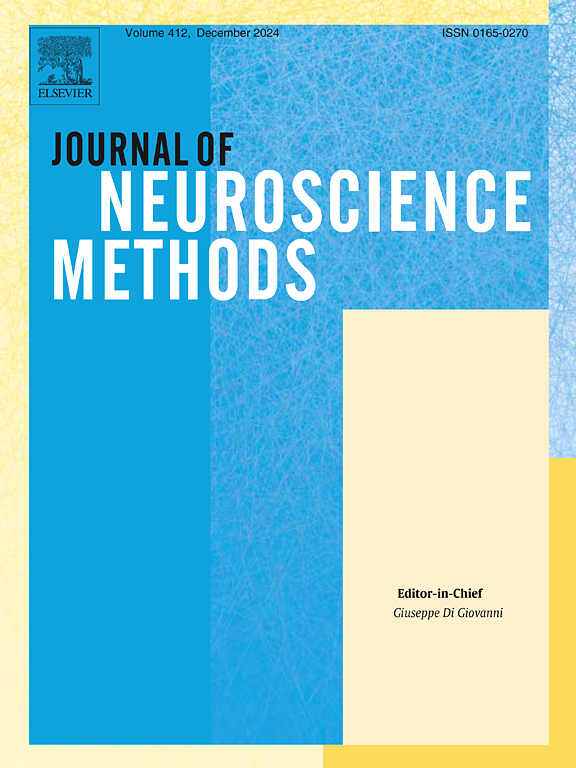PIDGN: An explainable multimodal deep learning framework for early prediction of Parkinson's disease
IF 2.7
4区 医学
Q2 BIOCHEMICAL RESEARCH METHODS
引用次数: 0
Abstract
Background
Parkinson's disease (PD), the second most common neurodegenerative disease in the world, is usually not diagnosed until the later stages of the disease, when patients might have already missed the best treatment period. Therefore, more effective prediction methods based on artificial intelligence (AI) are needed to assist physicians in timely diagnosis.
New methods
An explainable deep learning-based early Parkinson's disease diagnostic model, Parkinson's Integrative Diagnostic Gated Network (PIDGN), was designed by fusing Single Nucleotide Polymorphism (SNP) and brain sMRI data. Firstly, unimodal internal information was extracted using EmsembleTree dimensionality reduction method, Transformer encoder and 3D ResNet. Secondly, gated attention fusion technique was utilized to explore the inter-modal interactions. Finally, the classification results were output through the fully connected layer. SHapley additive interpretation (SHAP) values and Gradient-weighted Class Activation Mapping (Grad-CAM) techniques were used to help explain the importance of SNPs and brain regions for PD.
Results
The results showed that the PIDGN model achieved the best results with the accuracy of 0.858 and AUROC of 0.897. Top 20 SNPs and the brain regions near the midbrain potentially related to PD were identified using two explainable techniques via SHAP values and Grad-CAM respectively.
Comparison with existing methods and conclusion
The PIDGN model trained by fusing genetic and imaging data outperforms 13 other commonly used unimodal or bimodal models. Explainable PIDGN model helps deepen understanding of several SNPs and sMRI key factors that may affect PD. This study provides a potentially effective solution for automated early diagnosis of PD using AI.
PIDGN:用于帕金森病早期预测的可解释的多模态深度学习框架。
背景:帕金森病(PD)是世界上第二大最常见的神经退行性疾病,通常直到疾病的晚期才被诊断出来,此时患者可能已经错过了最佳治疗期。因此,需要更有效的基于人工智能(AI)的预测方法来协助医生及时诊断。新方法:通过融合单核苷酸多态性(SNP)和大脑sMRI数据,设计了一个可解释的基于深度学习的早期帕金森病诊断模型——帕金森综合诊断门控网络(PIDGN)。首先,利用EmsembleTree降维方法、Transformer编码器和3D ResNet提取单模态内部信息;其次,采用门控注意融合技术对多模态交互进行研究。最后,通过全连通层输出分类结果。使用SHapley加性解释(SHAP)值和梯度加权类激活映射(GradCAM)技术来帮助解释snp和大脑区域对PD的重要性。结果:结果表明,PIDGN模型的准确率为0.858,AUROC为0.897,达到最佳效果。分别通过SHAP值和GradCAM两种可解释的技术确定了前20个snp和中脑附近可能与PD相关的大脑区域。与现有方法的比较和结论:融合遗传和成像数据训练的PIDGN模型优于其他13种常用的单峰或双峰模型。可解释的PIDGN模型有助于加深对可能影响PD的几个snp和sMRI关键因素的理解。本研究为利用人工智能进行PD的自动早期诊断提供了一种潜在的有效解决方案。
本文章由计算机程序翻译,如有差异,请以英文原文为准。
求助全文
约1分钟内获得全文
求助全文
来源期刊

Journal of Neuroscience Methods
医学-神经科学
CiteScore
7.10
自引率
3.30%
发文量
226
审稿时长
52 days
期刊介绍:
The Journal of Neuroscience Methods publishes papers that describe new methods that are specifically for neuroscience research conducted in invertebrates, vertebrates or in man. Major methodological improvements or important refinements of established neuroscience methods are also considered for publication. The Journal''s Scope includes all aspects of contemporary neuroscience research, including anatomical, behavioural, biochemical, cellular, computational, molecular, invasive and non-invasive imaging, optogenetic, and physiological research investigations.
 求助内容:
求助内容: 应助结果提醒方式:
应助结果提醒方式:


